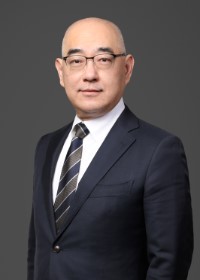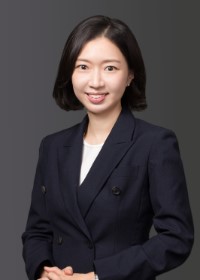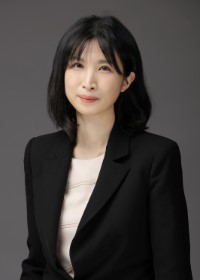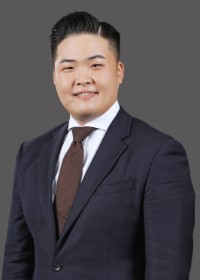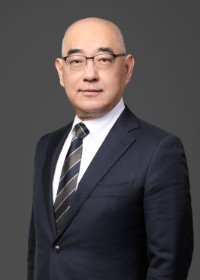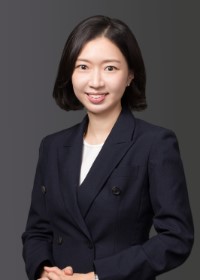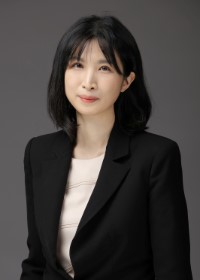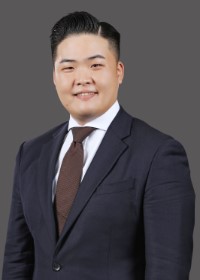Life Sciences & Pharma IP Litigation 2025
South Korea
1. Life Sciences and Pharma/Biopharma Patent Litigation
1.1 Claimants/Plaintiffs to an Action
Plaintiffs to an Infringement Action
According to Article 126 of the Korean Patent Act, the parties that may file a patent infringement action are limited to the patent holder or a registered exclusive licensee that has completed the registration of the exclusive licence at the Korean Intellectual Property Office. A registered exclusive licensee may initiate an infringement action independently without the consent or involvement of the patent holder.
Non-exclusive licensees, as well as exclusive licensees that have not completed the registration of the exclusive licence, are not entitled to file a patent infringement lawsuit as plaintiffs.
If a patent is jointly owned by multiple parties, each co-owner of the patent has the right to independently file a patent infringement lawsuit as a plaintiff without the consent of the other co-owners.
Standing Requirement to File a Nullity/Revocation Action
According to Article 133 of the Korean Patent Act, an interested party may file a nullity/revocation action with the Korean Intellectual Property Trial and Appeal Board (IPTAB). An interested party refers to anyone that has a legitimate interest in the patent, including a potential defendant in a patent infringement suit.
Whether the IPTAB’s Opinion is Binding
The IPTAB may issue opinions on patent infringement and validity. However, Korean courts are not bound by the IPTAB’s opinion in patent infringement proceedings and may independently evaluate and determine matters of patent infringement and validity, regardless of the IPTAB’s decision.
1.2 Defendants/Other Parties to an Action
In Korea, defendants in life sciences and pharmaceutical cases involving patent infringement are usually suppliers, importers, manufacturers or distributors of the generic drug. Patent infringement lawsuits against pharmacists, doctors, hospitals or healthcare regulatory authorities (HRAs) in Korea are highly unlikely. Infringement and nullity proceedings do not require notification to, or involvement of, HRAs in Korea or the Korean Intellectual Property Office.
1.3 Preliminary Injunction Proceedings
PIs Are Available in Korea
Preliminary injunctions (PIs) are generally available in Korea as part of patent infringement proceedings. A PI against patent infringement is a proceeding between the parties, and both parties are given the opportunity to be present for the hearing. Ex parte PI proceedings and protective letters are not available in Korea.
Both injunctive relief, which seeks to enjoin current patent infringement, and quia timet relief, which seeks to prevent future patent infringement, can be sought.
Requirements for Filing PIs
A patentee or registered exclusive licensee of a granted patent may file a PI, and there are no other special requirements for filing a PI.
Procedures and Timeline
PI proceedings typically take about six to 12 months, where one to three hearing sessions can be held. Briefing is allowed prior to each oral hearing. These oral hearings often include technical explanations to clarify issues for the court. Korean law does not provide a process for filing protective letters.
Notification of PI
Once a petition for PI is filed, the Korean court serves the petition for PI on the alleged infringer by registered mail. The hearing will not proceed until the alleged infringer has been served. After the alleged infringer has been served with the PI petition by registered mail, the case is usually managed via the court’s e-filing system.
Evidence and Defence in PIs
For a PI to be granted, both the right to be preserved and the necessity of preservation must be established. The patent holder must demonstrate that the patent is valid and is being infringed or will be infringed in the near future, ie, establish urgency.
The alleged infringer may submit evidence and arguments in defence against PIs. PIs may be denied under the following circumstances:
- the patent is likely to be invalidated in an invalidation trial or a revocation action of administrative decision;
- a favourable declaratory judgment regarding the scope of the patent to the generic manufacturer; or
- the remaining patent term is too short (indicating a lack of necessity for preservation).
Life Sciences Cases
The filing of a marketing authorisation (MA) application typically serves as the trigger point for seeking a PI against a generic or biosimilar manufacturer. Under Korean law (Art. 96(1)1 of the Patent Act), the use of a patented invention for the purpose of research and testing to obtain MA approval is excluded from acts of infringement. Consequently, similar to the US Hatch-Waxman Act, an originator cannot initiate a patent infringement lawsuit prior to the filing of the MA application.
When submitting an MA application, a generic/biosimilar company is required to provide a patent certification to the originator of the MA application under the regulatory approval-patent linkage system. This certification process usually prompts the originator to file a patent infringement lawsuit, typically shortly after the generic/biosimilar company submits its MA application.
PIs are not granted based solely on the filing of MA applications. The patentee must demonstrate that the generic/biosimilar manufacturer is actually producing, selling or importing the drug in a manner that infringes the patent, or that there is a substantial likelihood that it will infringe the patent in the future.
1.4 Structure of Main Proceedings on Infringement/Validity
Infringement and validity proceedings are bifurcated. However, an infringement court can hear and determine the validity of a patent without regard to the validity proceedings, and infringement proceedings do not need to be stayed until the validity proceedings are completed. Although it is up to the infringement court’s discretion, most infringement courts typically stay the infringement case upon the filing of a strong invalidation or revocation case.
1.5 Timing for Main Proceedings on Infringement/Validity
Statute of Limitations
Pursuant to Article 766 of the Korean Civil Code, a patentee’s right to claim damages is time-barred after three years from the date the patentee became aware of the infringement or ten years from the date the infringement occurred.
Notification of Infringement/Validity Proceedings
Once a complaint for infringement is filed with a Korean court, the Korean court notifies the defendant by registered mail. If the defendant is a foreign entity, the plaintiff must provide a translated version of the complaint, which will be served under the applicable treaty, eg, the Hague Convention, and the notice period is approximately three months to one year, depending on the country in which the defendant is located and any applicable treaties. If the defendant does not receive the complaint for infringement, the case will not proceed. Once the defendant is served with a complaint for infringement by registered mail, the case is usually managed through the court’s e-filing system.
A petition for invalidity proceedings before the IPTAB should also be served on the patentee under similar procedures. However, under the Korean Patent Act, a foreign patentee is required to appoint a Korean counsel, and the petition for invalidity proceedings against the foreign patentee is served on the patentee’s Korean counsel.
Procedure and Timeline of Infringement/Validity Proceedings
The defendant in an infringement case must file a response within 30 days of service of the complaint. Typically, the defendant will submit a short formal response denying the claim, followed by a detailed response within two to four weeks, as directed by the court. The court will then schedule a first hearing. Depending on the complexity of the case, multiple hearings may be held. The duration of infringement proceedings varies significantly based on the circumstances of the case. Generally, it takes between six months and two years for the court to render a decision.
The duration for a patent invalidity review proceeding filed with the IPTAB also varies depending on the case, but on average, it takes approximately 12 to 18 months for the IPTAB to render a decision. A patent invalidity review request filed by a defendant in a patent infringement action may be subject to expedited review, in which case the review process is accelerated, and a decision may be issued in approximately six to eight months.
1.6 Requirements to Bring Infringement Action
A patent must be granted and registered before an infringement action can be initiated. There are no additional requirements such as validation or translation. The type of patent is irrelevant to the requirements for filing an infringement action.
1.7 Pre-Action Discovery/Disclosure
Korea does not have a pre-action discovery/disclosure process. Instead, the Korean Civil Procedure Act provides a general procedure for preserving evidence, but it is rarely used in patent infringement cases due to its strict requirement that the requesting party must demonstrate that the evidence would likely become unavailable or unusable if it is not preserved in advance.
1.8 Search and Seizure Orders
Search and seizure orders are not available in patent cases in Korea.
Under Korean patent law, a plaintiff may ask the court to order the defendant to produce specific evidence to prove patent infringement and damages. However, unlike the US discovery system, Korea does not allow the plaintiff to undertake broad access to the defendant’s documents. The defendant is only required to produce the documents ordered by the court.
Korean courts generally accept evidence lawfully obtained in other jurisdictions without restrictions. Discovery under 28 USC Section 1782 is often used to gather evidence in Korean infringement cases.
1.9 Declaratory Relief
Courts in Korea do not grant declaratory relief for patent infringement cases. Instead, they provide remedies such as injunctive relief, preventative relief and damages if infringement is established. In other words, it is not possible for a plaintiff in a patent infringement case to seek declaratory relief from the court. However, it is possible to obtain confirmation from the IPTAB as to whether the infringing product falls within the scope of the patent (Positive Patent Scope Trials if filed by the patent owner or Negative Patent Scope Trials if filed by the potential infringer), but these scope trial decisions are only binding on the parties and not binding on the infringement courts.
1.10 Doctrine of Equivalents
In Korea, an accused product that contains a modified element compared to a patented invention may still be infringing under the doctrine of equivalents (DoE) if it satisfies the following criteria:
(1) The accused product operates based on a solution principle that is a substantially identical to that of the patented invention;
(2) The accused product achieves substantially the same effect as the patented invention, although some elements are different; and
(3) The modifications made to the accused products would have been obvious to a POSITA (person of ordinary skill in the art).
However, DoE infringement may not be found if (4) an accused product incorporates technology that was publicly disclosed prior to the filing of the patented invention, or that a POSITA could readily conceive of from the publicly known technology, or (5) the prosecution history of the patented invention indicates that the modified element of the invention under consideration was deliberately excluded from the claims of the patented invention.
1.11 Clearing the Way
Under Korea’s approval-patent linkage system, generic/biosimilar manufacturers cannot obtain marketing approval for the duration of a patent, unless they successfully challenge a Green-Listed patent (the Green List is similar to the Orange Book in the USA) or obtain a licence from the patent holder. Korea also provides a generic exclusivity incentive of nine months granted to the first generic manufacturer that successfully challenges a patent under the approval-patent linkage system. For example, a generic manufacturer must be the first to submit an MA application and to file either a patent invalidation trial or a negative patent scope action in order to secure first generic exclusivity (Art. 50(7) of the Pharmaceutical Affairs Act). Thus, this generic exclusivity incentive encourages generic manufacturers to challenge patents.
1.12 Experts
In Korean patent litigation, expert evidence is often presented by the parties. Each party may request testimony or submit opinions from a qualified expert they select. Oral testimony is not always required, as expert statements may also be submitted in written form.
In addition to party-appointed experts, a Korean court can separately appoint a neutral expert at an early stage of the proceeding to assist the judge in understanding the technical aspects of the case. Please also note that specialised IP courts typically have technical advisers on secondment from the Korean Intellectual Property Office.
Expert Evidence in PI Proceedings
Expert evidence can be used in PI proceedings, but due to procedural restrictions under the Korean Civil Procedure Act, oral testimony in court is generally not allowed in PI proceedings. As a result, expert evidence is usually submitted in written form.
Expert Evidence in Main Proceedings
In the main proceeding, unlike the PI proceeding, expert evidence can be presented through both oral testimony in court and written statements.
1.13 Use of Experiments
Under Korean law, there is no specific procedure or requirement for the submission of experimental results, but parties to a litigation may submit experimental results as evidence to support their claims. Such experimental results are typically conducted by technical experts and submitted in written expert statements.
In addition to submitting the results of experiments conducted by the parties themselves as evidence, if the parties wish to have the experiments conducted by a court-appointed expert, they must file an application for an expert with the court under the Korean Civil Procedure Act. Such application for court-appointed experiments is not available in PI proceedings, but only in the main proceedings.
1.14 Discovery/Disclosure
Korea does not have a discovery/disclosure process similar to that of the USA. Instead, under Korean patent law, the plaintiff may request the court to order the defendant to produce evidence to prove patent infringement and damages. However, unlike the broad scope of discovery in the USA, Korea does not allow the plaintiff access to all of the defendant’s documents, and the defendant is only required to produce the specific documents ordered by the court.
1.15 Defences and Exceptions to Patent Infringement
Common defences raised by generic/biosimilar manufacturers in patent infringement cases include non-infringement, invalidity, and practising the invention before the filing of the patent. The court will consider both non-infringement and invalidity arguments. If it is clear that no infringement occurred, the case may be dismissed solely on the basis of non-infringement, without addressing the validity of the patent. If the patent is found to be invalid in an invalidity action before the IPTAB, there is a high likelihood that the action will be dismissed by the civil infringement court.
1.16 Stays and Relevance of Parallel Proceedings
Korea does not have a formal system for staying litigation due to parallel proceedings. However, judges have discretion in managing such situations. Some judges may choose to delay a case while awaiting the results of an invalidity proceeding before the IPTAB if a decision is expected within a few months, while others may proceed without waiting for the IPTAB’s ruling. Korean courts typically do not pause cases based on foreign proceedings.
If a parallel proceeding is concluded or a foreign court has rendered a decision before the Korean court’s ruling, the outcome of those proceedings may be considered as persuasive but non-binding evidence.
1.17 Patent Amendment
Under Korean patent law, patent correction (also known as patent amendment) is an IPTAB process that allows a patent holder to amend the claims, descriptions or drawings of a granted patent. This process is designed to correct errors or clarify ambiguities in the patent.
Corrections can also be requested during patent infringement litigation or invalidation trials to strengthen the patent’s enforceability. For clarity, a patent correction must be requested through the IPTAB under a separate proceeding and cannot be directly filed with the court during an infringement lawsuit. As a result, claim correction cannot be conditionally presented at the infringement court.
If an IPTAB trial decision on a correction (amendment) of a patent specification or other relevant documents becomes final and binding after the conclusion of fact-finding hearings in an invalidation action or a civil patent infringement lawsuit, the correction shall be deemed retroactively effective pursuant to Article 136(10) of the Korean Patent Act. As a result, the invalidation IPTAB court or the civil patent infringement court will decide the case based on the corrected version of the claims and/or specification.
1.18 Court Arbiter
The first instances of patent infringement lawsuits are handled by five courts, which have IP specialised courts: the Seoul Central District Court, as well as the Daejeon, Daegu, Busan and Gwangju District Courts. Appeals in patent infringement cases and IPTAB actions (eg, cancellation of trial decisions for invalidity or scope confirmation) fall under the exclusive jurisdiction of the Intellectual Property High Court.
2. Generic Market Entry
2.1 Infringing Acts
Infringing Acts
In Korea, there are no specific rules governing the infringement of pharmaceutical products. Thus, as with general patent infringement, the sale, manufacture, use, export, import or offering for sale of generic drugs constitutes patent infringement.
In practice, pharmaceutical patent infringement lawsuits are typically filed after the MA application. When submitting an MA application, a generic/biosimilar company is required to provide a patent certification to the originator of the MA application under the regulatory approval-patent linkage system, similar to Paragraph IV certification under the Hatch-Waxman Act. Consequently, the originator often files a patent infringement lawsuit after receiving the patent certification, eg, shortly after the time the generic/biosimilar company’s MA application is filed.
Skinny Labelling
In Korea, the issue regarding skinny labelling is whether the extended term of a pharmaceutical patent applies not only to the indications approved at the time of the initial MA of the drug but also to the indications added through subsequent approvals. Generic manufacturers have argued that the extended term of the pharmaceutical patent only applies to the indications approved at the time of the initial MA of the drug and does not apply to the indications added later; thus, their use does not constitute infringement of the patent. In recent Intellectual Property High Court decision 2024Heo13541, the Intellectual Property High Court rejected the arguments of the generic manufacturers and determined that the indications added through subsequent approvals are substantially the same therapeutic effects as the indications approved at the time of the initial authorisation, and therefore, the extended term of the pharmaceutical patent also applies to the indications added through subsequent approvals; thus, generic manufacturers’ use constitutes patent infringement.
Parallel Imports
Under the Korean Pharmaceutical Affairs Act, only entities that have obtained import approval for pharmaceuticals are permitted to sell them. As a result, there are no known court precedents in Korea where patent infringement issues have arisen due to parallel imports, as such an act would be illegal.
2.2 Regulatory Data and Market Exclusivity
On 20 February 2024, an amendment to the Korean Pharmaceutical Affairs Act (the “Amendment”) was promulgated, which abolished the current drug review system and established a new system explicitly protecting drug data for the MA. The Amendment took effect on 21 February 2025, one year after its promulgation.
Under the Amendment, the periods of data exclusivity are as follows:
- Orphan drug: ten years from the date of MA (with an additional one-year extension if a paediatric indication is added).
- New drug: six years from the date of MA.
- Drug requiring submission of new clinical trial data due to a material change to a drug already approved (eg, modifications to improve safety, efficacy or usefulness): six years from the date of MA.
- Other drugs requiring submission of new clinical trial data and for which the need for data protection is acknowledged: four years from the date of updated MA.
2.3 Acceptable Pre-Launch Preparations
The Korean Patent Act allows the production of pharmaceutical products for research and experimental purposes, even if not conducted specifically for obtaining MA (Article 96(1) of the Patent Act). Korean case law has established that the Bolar exemption applies to the manufacture and storage of pharmaceutical products for bioequivalence testing.
2.4 Publicly Available Drug and Patent Information
The Ministry of Food and Drug Safety (MFDS) provides information on registered patents for each product called the “Green List”, which is equivalent to the Orange Book. This information is publicly accessible at nedrug.mfds.go.kr/searchBioeq. Under the approval-patent linkage system, when a generic manufacturer submits an MA application, the generic manufacturer must notify the patent holder of the MA applicant’s information within 20 days of the MA application submission.
2.5 Reimbursement and Pricing/Linkage Markets
Under Korea’s approval-patent linkage system, generic/biosimilar manufacturers cannot obtain MA while a relevant patent remains in force, unless it successfully challenges a Green-Listed patent or obtains a licence from the patent holder. Any patent that is recognised as relevant to an eligible original medicinal product may be Green-Listed, and different criteria are not applied depending on the category of the patent.
The pricing and reimbursement process takes place after MA and, unlike the MA process, is not specifically tied to the patent status. In Korea, the pricing and reimbursement process is done by drug, but not by indication.
3. Biosimilar Market Entry
3.1 Infringing Acts
2.1 Infringing Acts applies equally to biologics or biosimilar patents; there are no differences.
3.2 Data and Regulatory Exclusivity
2.2 Regulatory Data and Market Exclusivity applies equally to biologics or biosimilar patents; there are no differences.
3.3 Acceptable Pre-Launch Preparations
2.3 Acceptable Pre-Launch Preparations applies equally to biologics or biosimilar patents; there are no differences.
3.4 Publicly Available Drug and Patent Information
2.4 Publicly Available Drug and Patent Information applies equally to biologics or biosimilar patents; there are no differences.
3.5 Reimbursement and Pricing/Linkage Markets
2.5 Reimbursement and Pricing/Linkage Markets applies equally to biologics or biosimilar patents; there are no differences.
4. Patent Term Extensions for Pharmaceutical Products
4.1 Supplementary Protection Certificates
Korean Patent Term Extension
According to Article 95 of the Korean Patent Act, a patent term extension (PTE) allows for extension of a patent term by a maximum of five years if a delay in obtaining regulatory approval for a pharmaceutical or agrochemical product has significantly impacted the time for commercial sale, essentially providing additional protection for the time spent waiting for MA. The PTE can only be applied once per patent and is subject to certain conditions regarding the “new substance” requirement of the product involved.
Where different products are covered by a single patent, the patent term may be extended based on the longest regulatory approval period among the products. In the past, it was possible to extend the term for multiple patents covering the same drug product, but recent amendments to the Korean Patent Act now allow only one patent to be extended per product.
SPC Waiver
Korean law does not currently provide a Supplementary Protection Certificate (SPC) manufacturing waiver or an equivalent legal mechanism.
4.2 Paediatric Extensions
Korea does not provide PTEs specifically for paediatric drugs, nor does it grant a paediatric-specific data exclusivity period under current law.
4.3 Paediatric-Use Marketing Authorisations
In Korea, MAs are not available for already authorised medicines that have no remaining patent or SPC (or equivalent PTE) but are developed specifically for paediatric use.
4.4 Orphan Medicines Extensions
Korea gives a ten-year data exclusivity for orphan medicines.
5. Relief Available for Patent Infringement
5.1 Preliminary Injunctive Relief
Under Korean law, it is not possible for a patent holder (or exclusive licensee) to request an undertaking from the alleged infringer to pay damages in exchange for a PI.
In order to obtain a PI, a security deposit is typically required to cover any damages that may be incurred by an alleged infringer. The PI becomes enforceable upon submission of proof of the bond deposit.
Once the PI is granted, a court-appointed enforcement officer will take custody of the defendant’s infringing products in accordance with the terms of the PI.
In Korea, the mere filing of an objection by the defendant against a PI does not automatically suspend the execution of the PI. Unless the court accepts the defendant’s objection to the PI, the execution of the PI cannot be suspended, even if the defendant provides a security deposit.
5.2 Final Injunctive Relief
Final injunctions issued by the first-instance court can be provisionally enforced even before the judgment becomes final on appeal, ie, enforcement is possible after conclusion of the first instance. However, the defendant may file an appeal and request a stay of execution upon submitting a bond covering the potential damages until the appellate court renders its decision.
In the pharmaceutical sector, generic manufacturers typically comply with the first-instance court’s final injunction and voluntarily cease production and sales. If a generic manufacturer were to violate the final injunction and continue manufacturing and selling the product, the patent holder could seek enforcement through a court bailiff to seize the stock of pharmaceutical products.
5.3 Discretion to Award Injunctive Relief (Final or Preliminary)
Under Korean law, when patent infringement is recognised and the patent holder requests an injunction, the court is required to grant the injunction as a matter of principle. Once the court upholds the injunction request, it has no discretion to impose restrictions or conditions on the injunction or to substitute it with damages.
5.4 Damages
Damages Calculation Methods
Under the Korean Patent Act, the damages for patent infringement are calculated or estimated as follows:
- The quantity sold by the generic/biosimilar company multiplied by the patent holder’s profit per unit. For quantities exceeding the patent holder’s production capacity, a reasonable amount the patent holder could have received is applied;
- The profit gained by the generic/biosimilar company from the infringing activity;
- A reasonable amount the patent holder could have received for licensing the patented invention. Seeking claims for additional damages beyond this amount is also permissible; or
- An appropriate amount determined by the court based on the entirety of the arguments.
In practice, courts typically recognise a percentage of the generic manufacturer’s sales revenue as the basis for calculating damages.
Punitive Damages
The punitive damages system has been strengthened to allow compensation of up to five times the actual damages for wilful patent infringement (Art. 128(8) of the Patent Act, effective 21 August 2024).
Damages in Pharmaceutical Cases
In Korea, there are no special damages provisions applicable exclusively to pharmaceutical cases.
Interest on Damages
Generally, interest accrues at 12% per annum from the day after the date of judgment in the patent infringement action until the date of payment.
When Are Damages Considered?
At the patentee’s option, the patentee may choose to pursue both infringement and damages claims separately or in a single action. The court will first address infringement and validity. If the court finds that the defendant is infringing a valid patent, it will then consider the calculation of damages.
Damages for a Wrongful Injunction
If a PI is enforced but ultimately dismissed on appeal, the alleged infringer may be entitled to seek damages for wrongful enforcement of the PI. However, to date, there have been very few such cases in the pharmaceutical sector.
Third-Party Claim
No person other than the patentee and exclusive licensee may claim damages for patent infringement.
5.5 Legal Costs
Court fees are relatively low; for example, the court fee for filing a patent infringement suit against a single company without a damages claim is approximately KRW1 million. In cases involving a damages claim, the court fee varies based on the claimed amount. Korean courts will decide how litigation costs (including attorneys’ fees) are to be divided, at the time of judgment in patent infringement cases. Generally, the losing party is required to bear the statutory litigation costs, which are different from the actual litigation costs.
5.6 Relevance of Claimant/Plaintiff Conduct to Relief
In patent infringement cases, the court may not withhold or reduce damages as a penalty for negative conduct by the plaintiff.
6. Other IP Rights
6.1 Trade Marks
Trade mark disputes in the life sciences and pharmaceutical sectors are relatively common in Korea and are governed by the Korean Trademark Act. As with general trade mark cases, the main issue in a case is often whether the disputed trade mark is likely to cause consumer confusion as to the origin of the product.
6.2 Copyright
Copyright disputes in the life sciences and pharmaceutical sectors are uncommon in Korea.
6.3 Trade Secrets
In Korea, there have been several large-scale trade secret disputes involving the strain that produces the botulinum toxin and the toxin manufacturing process. Other cases have involved trade secret leaks related to clinical trials and product development.
7. Appeal
7.1 Timeframe to Appeal Decision
Appeal Against a PI
A plaintiff in a PI may file an appeal against the dismissal of PI within seven days of being notified of the decision. A defendant in a PI may file an appeal without limitation of time after the PI decision. If the plaintiff appeals the decision to dismiss the PI or the defendant appeals the granting of the PI, the appellate court will conduct a de novo review, reconsidering the same issues as addressed in the first instance. If the patent later becomes conclusively invalid after the PI is granted, the defendant can apply to have the PI cancelled.
Appeal Against a Main Action Decision
The plaintiff or the defendant may file an appeal against the decision of the first instance within 14 days of notification of the decision. The appeal is heard by the Intellectual Property High Court, which considers the case de novo, examining the same issues as in the first instance. If dissatisfied with the Intellectual Property High Court’s ruling, either the plaintiff or the defendant may appeal to the Supreme Court within 14 days of receipt of the decision of the Intellectual Property High Court. The Supreme Court does not review factual matters but limits its analysis to whether the decision of the Intellectual Property High Court was legally erroneous.
If the patent is invalidated during the main proceeding or on appeal, the court may decide to dismiss the plaintiff’s claims. However, if the patentee files a cancellation action in court against the IPTAB’s decision to invalidate the patent, the invalidity decision is not deemed final, and the court in the main proceeding may independently determine the validity of the patent.
7.2 Appeal Court(s) Arbiter
A three-judge panel of the Intellectual Property High Court hears appeals.
7.3 Special Provisions
Patent litigation is generally governed by the Korean Code of Civil Procedure. Specific provisions under the Korean Patent Act apply to patent litigation, including Article 128 of the Patent Act governing the calculation of damages and Article 132 of the Patent Act allowing the courts to issue orders for production of documents.
Under Article 128 of the Patent Act, courts can award up to five times the actual damages for wilful patent infringement, in addition to compensating for all profits derived from the sales of infringing products.
Under Article 132 of the Patent Act, the court may, at the request of the patent holder, order the defendant to submit documents necessary to prove patent infringement or calculate the amount of damages.
8. Other Relevant Forums/Procedures
8.1 The UPC or Other Forums
KTC Investigation
Any party that discovers unfair international trade practices with concrete evidence of infringement may file a complaint within one year from the date of the alleged infringement. The Korea Trade Commission (KTC) may undertake an ex officio investigation, if necessary, when there is a reasonable suspicion of unfair international trade practices. If the KTC determines that unfair international trade practices exist, it may issue enforcement measures against the relevant actors, including:
- Suspension of imports, exports, sales or manufacturing of infringing products;
- A ban on the landing and/or abandonment of the goods;
- Corrective advertising orders;
- Publication of violation of the law, and other necessary measures.
Customs Suspension of Import and Export
Customs may, ex officio or at the request of the patent holder, suspend import and export procedures for products suspected of patent infringement to protect patent rights.
9. Alternative Dispute Resolution
9.1 ADR Options
In the life sciences sector, dispute resolution through alternative dispute resolution is less common compared to court adjudication. In some cases, the parties may reach an agreement on the amount of damages during court proceedings following a court finding of patent infringement.
10. Settlement/Antitrust
10.1 Considerations and Scrutiny
According to Supreme Court Decision 2012 Du 2449, a “reverse payment agreement”, whereby a patent holder agrees to pay a certain price to a generic drug developer with which it has a patent dispute to end the patent dispute and delay the generic drug developer’s entry into the market for a certain period of time, may constitute a violation of Korean antitrust law.
All settlement agreements of patent litigation between a patent holder and a generic drug developer must be submitted to the Korean Fair Trade Commission (KFTC) and the MFDS. The KFTC may also conduct investigations into patent licensing practices, including reverse payment agreements involving patent abuse, in co-operation with the MFDS on a regular or irregular basis.
11. Collective Redress
11.1 Group Claims
There is no special system for group claims, such as class actions, in relation to allegedly defective medicines/medical devices. Korea does not yet have legal procedures for class action litigation. However, patients may initiate lawsuits as joint plaintiffs under the general civil litigation framework.
Bae, Kim & Lee LLC
Centropolis B,
26 Ujeongguk-ro,
Jongno-gu,
Seoul 03161,
Korea
+82 2 3404 0000
+82 2 3404 0001
bkl@bkl.co.kr www.bkl.co.kr/law?lang=en
Trends and Developments
Recent Amendments to Patent Law
Amendments to the Patent Law were announced on 21 January 2025 and, according to the supplementary provisions, are scheduled to take effect on 22 July 2025 (six months after their announcement) (hereinafter “Amended Patent Law”). The amendments that relate to life science and pharmaceutical IP litigation include (i) introducing a cap on the extension of a patent term and a limitation on the number of patents that can be extended, and (ii) adding the act of export as a recognised act of patent exploitation (ie, recognised use of the patent).
Changes to the patent term extension system
It is expected that these changes will result in accelerated release of generic drugs. As a result, patent holders will need to establish a strategy for patent term extensions in view of the Amended Patent Law.
The Amended Patent Law introduces a new proviso to Article 89, Paragraph 1, which stipulates that an extended patent term due to drug approval cannot exceed 14 years from the date of drug approval.
Prior to the Amended Patent Law, the regulations set the maximum extension period to five years. For instance, if a patent had a life of 15 years from date of receiving marketing approval from the Ministry of Food and Drug Safety (MFDS), the total period would have been 20 years from receiving marketing approval (ie, 15 years + 5 years).
In contrast, by stipulating that the extended patent term cannot exceed 14 years from the date of drug approval, the effective extension period can be shorter. For example, even if the period required for drug approval by the MFDS is five years, an original patent term expiring 11 years after the drug approval date can only receive an extension for three years according to the new cap regulation.
Therefore, drug patent holders need to consider both the original patent expiration date and the 14-year period from the drug approval date when establishing their extension strategy.
The Amended Patent Law also introduces a new Paragraph 7 to Article 90, which limits to extension to one patent for a single drug approval.
Under the current Patent Law, if there are multiple patents registered before the drug approval date, the extension can be applied to multiple patents. However, with the implementation of the Amended Patent Law, only one patent will be able to be extended even if there are multiple patents relating to the approved drug.
Therefore, drug patent holders will need to review which patent among the multiple patents relating to the approved drug would be most advantageous to secure exclusive rights for and establish their extension strategy accordingly.
The addition of exportation as a form of patent exploitation
With the addition of the act of exportation as a form of patent exploitation, patent holders can now be protected against the export of infringing drugs.
Under the current Patent Law, Article 2, Paragraph 3 includes the act of “import” as a form of patent exploitation but does not include the act of “export”. Korean courts have applied the principle that the export of infringing products does not constitute patent infringement, in view of the legislative history and the principle of territoriality of patents. The Amended Patent Law adds the act of “export” as a form of patent exploitation, thereby making it possible to seek injunctions, claim damages and establish criminal liability for the export of infringing drugs.
Under the current Patent Act, since “export” does not constitute an act of patent infringement, the patentee’s damages can only include damages for the “production” of the products in Korea if the infringing products are not sold in Korea and are completely exported from Korea to foreign countries. That is, Article 128 of the Patent Act presumes the amount of profit made by the infringer through patent infringement to be the amount of damages suffered by the patentee. However, under the current Patent Act, since “export” is not included as an act of infringement, the amount of profit made by “exporting” infringing products is excluded from the damages suffered by the patentee. However, under the Amended Patent Law, the damage caused by “export” may also be included in the damages analysis. However, even under the Amended Patent Law, there is a view that, in order to prevent double compensation, the Korean court may not recognise damages caused by “export” based on the principle of territoriality. Therefore, it is necessary to monitor future rulings of the Korean court.
Implementation of Drug Data Protection System Under the Pharmaceutical Affairs Act
The drug data protection system under the amended Pharmaceutical Affairs Act was announced on 20 February 2024 and took effect on 21 February 2025 (hereinafter “the Amended PAA”).
Data exclusivity was previously granted in connection with the re-examination system (also known as the Post Market Surveillance) during the re-examination period. However, under the Amended PAA, the drug data protection system will be implemented separately from the re-examination system.
Under the previous system, data exclusivity was granted for ten years for “orphan drugs”, six years for “new drugs”, six years for drugs with “new active ingredients, new combinations or new administration routes”, and four years for drugs with “new indications” during the re-examination period.
Under the drug data protection system according to Article 31-6 of the Amended PAA, data protection periods are granted as follows: ten years for “orphan drugs” (with a possible one-year extension for additional paediatric indications), six years for “new drugs”, six years for drugs that require new clinical trial data to improve the safety, efficacy or usefulness of already approved drugs, and four years for other drugs that require new clinical trial data for approval.
Under the previous re-examination system, some improved new drugs for which Phase 3 clinical trials had been conducted did not receive a re-examination period despite the submission of new clinical trial data. However, under the drug data protection system of the Amended PAA, a new four-year data protection period is granted for “other drugs that require new clinical trial data for approval”, thereby expanding the scope of data exclusivity.
Recent Case – Skinny Labelling
Summary
The court held that an active ingredient and pharmacological effects were substantially the same and therefore the skinny-labelled generics fell within the scope of the patent with extended patent term (Intellectual Property High Court 2024Heo13541).
Facts
Original drug manufacturers, after receiving initial marketing approval, often obtain additional approvals to subdivide patient groups or add similar diseases as new indications. “Skinny labels” of generic drug manufacturers exclude certain indications received by the original drug manufacturers from the uses on the label of generic drugs in an effort to escape infringement of patents covering the excluded indications. In this particular case, Korean generic drug manufacturers argued that the extended patent rights should only apply to the indications approved at the time of the initial marketing approval, not to the new indications added after the extension.
However, the Korean court determined that since the active ingredient, therapeutic effect and indications are substantially the same, the extended patent rights also apply to skinny-labelled generics. Thus, the skinny -labelled generics still fell within the scope of the patent with extended term.
Details
- Korean Patent No. 1,088,247 (“Patent”): This patent covers a chromane-substituted benzimidazole derivative compound, the active ingredient in K-Cap tablet®, used to treat diseases mediated by acid pump inhibition.
- Exclusive Licensee: On 6 September 2017, the exclusive licensee applied for marketing approval for K-Cap tablet® for (i) erosive gastroesophageal reflux disease and (ii) non-erosive gastroesophageal reflux disease. The approval was granted on 5 July 2018.
- Additional Approvals: The exclusive licensee received three additional approvals for new indications:
- 26 July 2019: (iii) Gastric ulcer
- 9 March 2020: (iv) Combination therapy with antibiotics for the eradication of Helicobacter pylori in patients with peptic ulcer and/or chronic atrophic gastritis
- 20 July 2022: (v) Maintenance therapy after treatment of erosive gastroesophageal reflux disease
- Patent Extension: The patent holder applied for an extension of the patent term on 4 October 2018, to account for the time taken for the drug approval process. The Korean Intellectual Property Office granted an extension of 1,723 days on 20 February 2020. The patent, originally set to expire around December 2026, was thereby extended to 25 August 2031.
Issue
Generic manufacturers’ argument
Generic manufacturers argued that the extended patent rights under Article 95 of the Patent Act should only apply to the indications approved at the time of the initial marketing approval, not to the new indications added after the extension. Therefore, they claimed that the extended patent rights do not apply to their generics, which were labelled only for indication (iv).
Patent holder’s argument
The patent holder argued that the scope of the extended patent rights under Article 95 of the Patent Act should be determined based on the “implementation of the patented invention”, considering the active ingredient, therapeutic effect and use. They contended that “use” should not be limited to the indications approved at the time of the initial marketing approval but should be assessed based on the description in the patent specification. They also argued that indication (iv) is substantially the same as indications (i) and (ii) in terms of medical use.
Patent Court’s Decision
The Patent Court ruled that:
1. The scope of the extended patent rights under Article 95 of the Patent Act should not be limited to the indications approved at the time of the initial marketing approval but should be assessed based on the description in the patent specification.
2. The active ingredient and pharmacological mechanism of the original and generic drugs are the same, and indication (iv) is substantially the same as indications (i) and (ii) in terms of medical use.
3. Therefore, the skinny-labelled generics for indication (iv) fell within the scope of the patent with extended term.
Grounds for the court’s judgment
In patent law, “medical use” partially overlaps with the “efficacy and effects” of a drug as specified in pharmaceutical law, as both refer to the indications for which the drug can be used. However, in the case of medical use inventions, the use constitutes part of the invention in addition to the specific substance. The medical use is expressed in terms of effects or target diseases related to the diagnosis, treatment, alleviation, management or prevention of diseases, beyond widely known pharmacological mechanisms.
On the other hand, the “efficacy and effects” in pharmaceutical law for drug approval must be indicated as specifically as possible within the medically recognised scope, using disease names or symptom names that can be clearly demonstrated for efficacy. This distinction is necessary because the degree of efficacy demonstration can vary based on the medical history or severity of the subjects recruited.
Given the purposes and operational differences between patent law and pharmaceutical law, as well as the objectives and methods of the patent term extension system and the drug approval system, it is difficult to find a special reason to equate “use” in patent law with “efficacy and effects” in pharmaceutical law. Moreover, there is no legal basis to interpret “use” for determining the scope of the extended patent rights as the “efficacy and effects” approved under pharmaceutical law.
Even if a patented invention has multiple efficacies and effects, and the patent holder conducts related clinical trials simultaneously to obtain drug approval for each efficacy and effect, it is practically impossible to simultaneously secure test data on efficacy and safety for all indications due to differences in therapeutic confirmation guidelines and difficulty of subject recruitment for each indication. Furthermore, there is no reason or necessity to force the patent holder to wait until all test data related to all efficacies and effects are obtained before applying for drug approval.
Additionally, the patent holder may adopt different strategies for applying for drug approval based on market conditions or sales policies, such as applying for approval for each efficacy and effect separately or obtaining additional approvals for some indications after initially applying for approval for certain indications. Considering the practical operation of the drug approval system, it is difficult to see that the “use” in patent law, as a criterion for determining the scope of extended patent rights, necessarily aligns with the “efficacy and effects” in pharmaceutical law.
Drug approval under pharmaceutical law is distinguished by the timing of the application. If the criteria for determining “therapeutic effect and use” are based on this, the identity of “therapeutic effect and use” would be determined by the administrative act of “drug approval” rather than the technical significance of the patented invention. Comparing cases where multiple indications are applied for and approved simultaneously at the time of the initial drug approval application with cases where approvals are obtained sequentially, an inconsistency arises where the scope of the extended patent term is broader for the former despite being the same patented invention.
Comments
This ruling is the first case where the Patent Court determined whether the scope of extended patent rights applies to skinny-labelled generics, effectively curbing the generic manufacturers’ skinny label strategy. However, this ruling is not final, as the generic drug manufacturers have appealed to the Supreme Court. Therefore, it is necessary to monitor the Supreme Court’s final decision.
Bae, Kim & Lee LLC
Centropolis B
26 Ujeongguk-ro
Jongno-gu
Seoul 03161
South Korea
+82 2 3404 0000
+82 2 3404 0001
bkl@bkl.co.kr www.bkl.co.kr/law?lang=en
